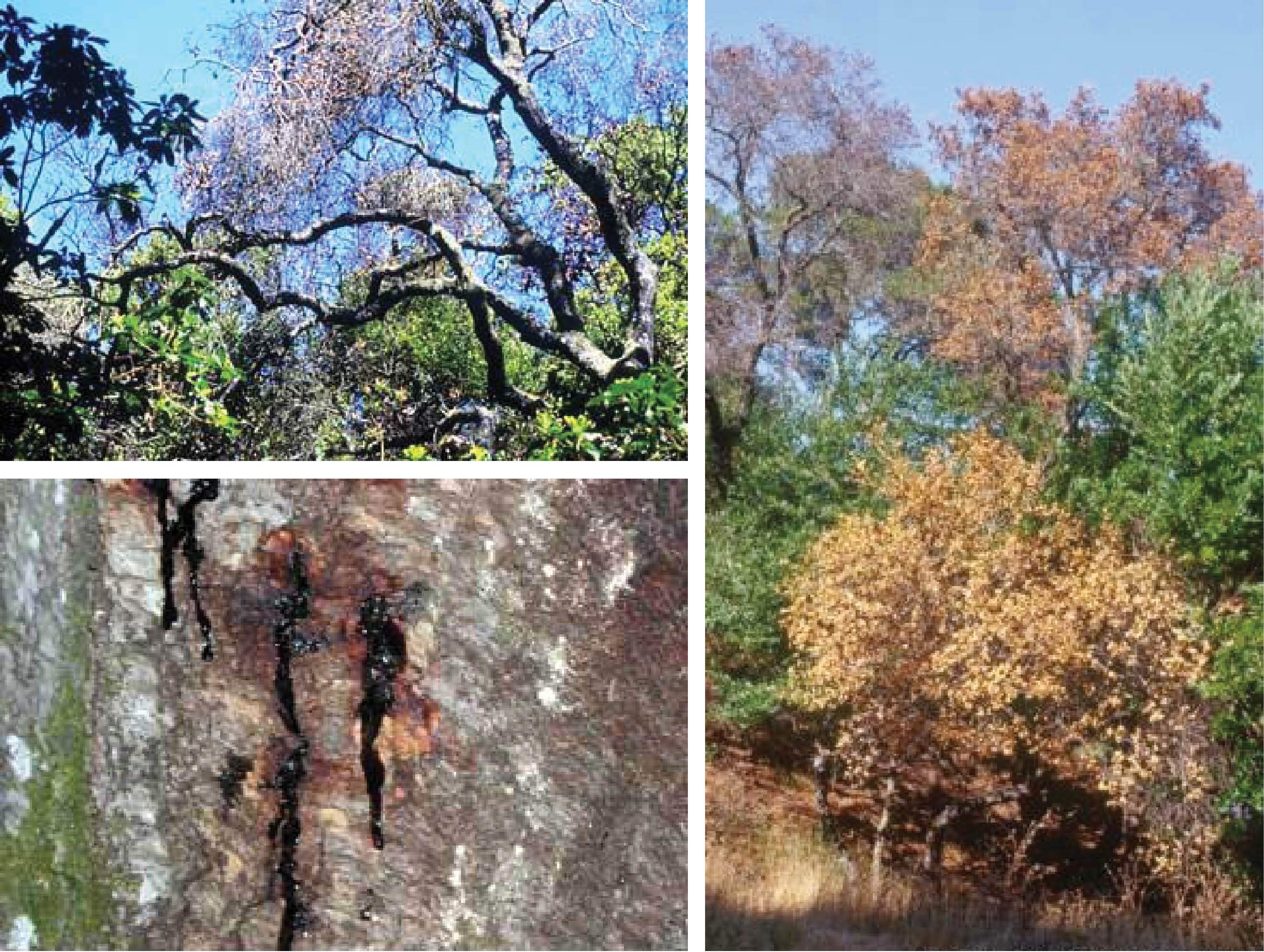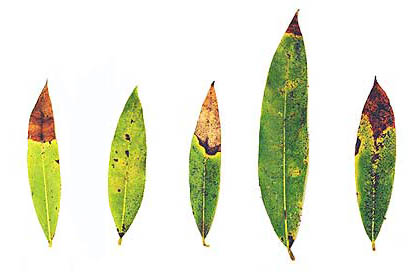Sudden Oak Death: What can be done to save your oaks?
The fungus commonly known as Sudden Oak Death or SOD (Phytophthora ramorum) is fatal to many oak species including coast live oak, sheve oak, interier live oak, holly oak, and black oak, among others. The fungus is spread during cool, moist periods of spring and fall. The fungus acts quickly on the vascular tissue of the tree, blocking the tree’s ability to transport nutrients and water to its canopy and roots. Bleeding cankers are often associated with SOD infections. Large trees can succumb to the fungus rather quickly, causing them to die and require removal. Once a tree has become infected, usually there is not much that can be done to save it.

What can we do?
Prevention is the key to keeping trees from becoming infected. One form of prevention is to ensure that host plants are not touching healthy oaks. This is difficult to do because the host list is about 100 species strong and growing. Applying a preventative systemic treatment to the base of susceptible trees in fall and spring is the best course of action. The treatment acts upon the Sudden Oak Death fungus if it is present and disables its ability to spread and multiply.

Arborwell’s team of ISA Certified Arborists are experts on Sudden Oak Death prevention.
Click here to request a consultation.